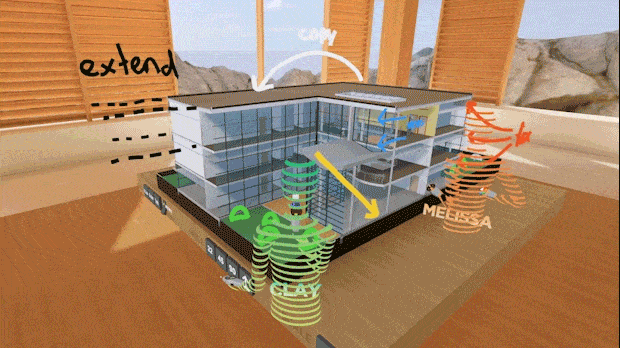All around the world we’ve heard the value of virtual reality when it comes to health care but no one really knows how to use it properly. Some companies and Healthcare organizations have tried but these cases and value is still Limited.
More testing and collaboration is needed in order to make something that can actually help patients heal faster or help doctors to save lives. That is why it’s in live it we are working with universities from across the world in order to create a network of healthcare organizations and educational institutions that want to see virtual reality used to Aid in patient care.
Recently SimLabIT along with the Karolinska Institute, the University of Leeds, the open knowledge foundation, and the University of Thessaloniki have been awarded a 1M€ Grant from the Erasmus+ program. This project, known as ENTICE, is dedicated to exploring the possibilities of using VR/AR/MR/XR in education for students and staff alike.
Moreover, it will establish a network of universities and hospitals who want to create content and share it with other universities and hospitals across the world. This will allow for virtual reality to become more common as content can be created and tested easily by a larger number of qualified professionals.
VR for create a Network for medical Educators
In addition to working with partners through the projects, SimLabIT will also be holding events that will promote VR/AR/MR/XR throughout the world. For this we have raised 380.000 Euros in seed funding from existing investors, the Erasmus Foundation, Finland’s ELY center, Spain Government, and established sales office in the city of Alicante, Spain. Our goal is to bring virtual reality to this Global Network and create the revolution in medical education for all.
Lastly, to expand what we’re doing we are reaching out to pharmaceutical and medical device companies that want to help with this revolution of medical education. We have seen much interest from the pharmaceutical industry in this matter as they also would like to produce content to help patients. As we are already working with Airbus Defence & Space and many pharmaceutical companies, we are inviting as many as possible who want to join in to contact us.
Conclusion
Virtual reality has the potential for changing the world for the better. It can help ease pain, prepare for New Life issues and experiences, and create new processes for doctors to follow. It will take a Global Network of researchers working together in order to find the best way to use this new technology for the better. At SimLabITwe want to become that Network and help those who want to save lives.
Quelle:
The creation of the world’s first Network for medical Educators who export using VR

 The Wild, a start-up from Portland, Oregon has just announced an integration with UK-based Igloo Vision
The Wild, a start-up from Portland, Oregon has just announced an integration with UK-based Igloo Vision